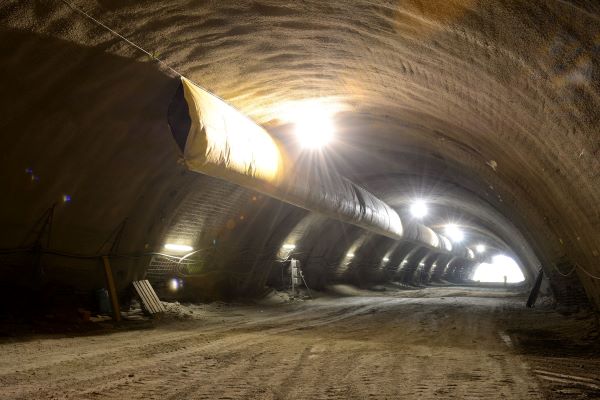Lectures:
1. Geotechnics and the environment. Impact of building structures on individual components of the environment (geosphere, hydrosphere, biosphere, etc.).
2. Geotechnical risk assessment, management and sustainability. Risks and their evaluation - types of risks, risk management. Baseline ("Baseline") study. Environmental Impact Assessment EIA, Risk Analysis, Feasibility Study.
3. Geohazards. Types of geohazards - endogenous and exogenous (eg earthquakes, slope instability - landslides, floods, droughts). Survey, critical assessment. Preventive and reparative measures.
4. Soil and groundwater contamination. Sources of contamination, types of contaminants. Mobility of contaminants, transport mechanisms.
5. Investigation of contaminated sites, soil and water sampling. Remediation - Selection of the remedial method (In-situ methods, Ex situ, Containment reactive barriers, etc.).
6.-7.Construction of waste dumps (including mining). Types of waste, characterization and properties. Design of engineering barriers - covers, liners, underground impermeable walls. Application of geosynthetics in geo-environmental engineering - geotextiles, geocomposites, geomembranes, geosynthetic clay liners. Structural elements - stability of geotechnical structures of landfills (modification of slopes). Environmental impacts of landfills and their elimination (degassing, closure - remediation).
8.-9. Environmental impacts of mining activities – abandonment of mines. Mining waste - tailings, tailings dams, leaching fields - construction and remediation. Geotechnical problems of mining activities - stability of quarry walls - dewatering ("depressurization"). Environmental impacts of abandoned mines - flooding, shafts stability, gas emanations.
10. Monitoring of legacies from mining, potential use of old mine workings and mine water.
11. Energy geotechnics. Low-potential (shallow) and high-potential (deep) geothermal systems. Exploitation of geothermal energy - open-loop and closed-loop systems.
12. Thermal energy storage in the rock environment (BTES, ATES).
13-14. Possibilities of exploitation and storage of heat through geotechnical constructions, foundation structures (eg energy piles), underground structures (eg heat exchangers in tunnel lining), earth structures (horizontal heat exchangers).
Practical training:
1.- 4.Development project of municipal waste landfills.
5.-7. Calculations of contaminant transport in groundwater - analytical calculations, including using freeware BIONAPL, BIOPLUME, etc.
8-12. Designing a system of drilling heat exchangers.
13-14. Literature review on the selected topic in the field of environmental and energy geotechnics.
1. Geotechnics and the environment. Impact of building structures on individual components of the environment (geosphere, hydrosphere, biosphere, etc.).
2. Geotechnical risk assessment, management and sustainability. Risks and their evaluation - types of risks, risk management. Baseline ("Baseline") study. Environmental Impact Assessment EIA, Risk Analysis, Feasibility Study.
3. Geohazards. Types of geohazards - endogenous and exogenous (eg earthquakes, slope instability - landslides, floods, droughts). Survey, critical assessment. Preventive and reparative measures.
4. Soil and groundwater contamination. Sources of contamination, types of contaminants. Mobility of contaminants, transport mechanisms.
5. Investigation of contaminated sites, soil and water sampling. Remediation - Selection of the remedial method (In-situ methods, Ex situ, Containment reactive barriers, etc.).
6.-7.Construction of waste dumps (including mining). Types of waste, characterization and properties. Design of engineering barriers - covers, liners, underground impermeable walls. Application of geosynthetics in geo-environmental engineering - geotextiles, geocomposites, geomembranes, geosynthetic clay liners. Structural elements - stability of geotechnical structures of landfills (modification of slopes). Environmental impacts of landfills and their elimination (degassing, closure - remediation).
8.-9. Environmental impacts of mining activities – abandonment of mines. Mining waste - tailings, tailings dams, leaching fields - construction and remediation. Geotechnical problems of mining activities - stability of quarry walls - dewatering ("depressurization"). Environmental impacts of abandoned mines - flooding, shafts stability, gas emanations.
10. Monitoring of legacies from mining, potential use of old mine workings and mine water.
11. Energy geotechnics. Low-potential (shallow) and high-potential (deep) geothermal systems. Exploitation of geothermal energy - open-loop and closed-loop systems.
12. Thermal energy storage in the rock environment (BTES, ATES).
13-14. Possibilities of exploitation and storage of heat through geotechnical constructions, foundation structures (eg energy piles), underground structures (eg heat exchangers in tunnel lining), earth structures (horizontal heat exchangers).
Practical training:
1.- 4.Development project of municipal waste landfills.
5.-7. Calculations of contaminant transport in groundwater - analytical calculations, including using freeware BIONAPL, BIOPLUME, etc.
8-12. Designing a system of drilling heat exchangers.
13-14. Literature review on the selected topic in the field of environmental and energy geotechnics.
